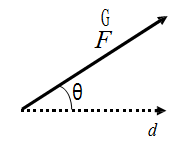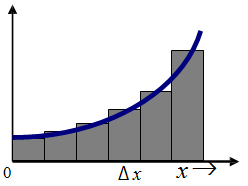WORK AND ENERGY
1. Work can be defined as: the force applied in direction of displacement ×. This means that if the force F acts at an angle θ with respect to the direction of motion, then
→ →
W = F ⋅ d = Fd cosθ

2. a) Work is the scalar quantity - it has magnitude but no direction.
b) The dimensions of the work are: M × (L T -2 ) × L = M L2T -2
c) The units: 1 Newton × 1 Metre = 1 Joule (J)
3. Suppose you lift the mass of 20 kg from a distance of 2 metres. Afterwards the work you perform is 20 kg × 9.8 Newtons × 2 metres = 39.2 Joules. Conversely, the force of gravity is directed opposite to the force exerted by you and the work done by gravity is - 39.2 Joules.
4. What if the force differs with distance (as we pull the spring harder as it becomes longer). In such case, we should break up distance over which the force acts into small parts so that the force is approximately constant over each bit. As we create the pieces smaller and smaller, we will attain the exact result:
0

Now add up all the little pieces of work:

To get the exact result let Δx → 0 and the number of intervals N
7. Energy is the capacity of a physical system to perform work:
? it comes in various forms - mechanical, nuclear, chemical, electrical, etc
1) it can be stored
2) it can be converted into different forms
3) it can never be created or destroyed